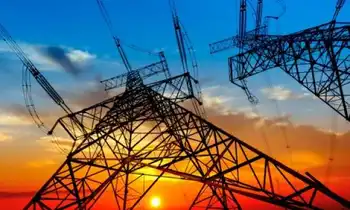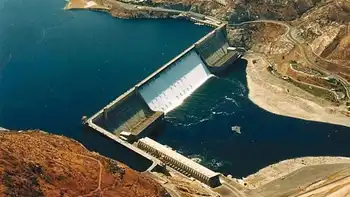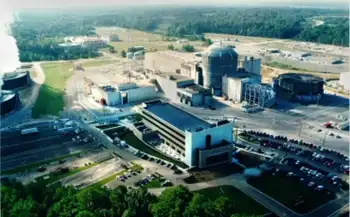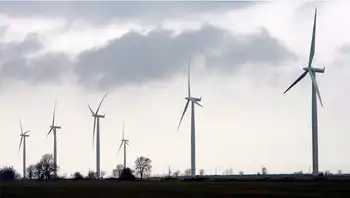Alberta claims 'real reductions' in carbon
EDMONTON, ALBERTA - The rise of the oils sands has won Alberta infamy as the continent's biggest new emitter of greenhouse gases. But the province would rather be known for taking the lead in reducing industrial emissions.
While its critics call it toothless and fundamentally flawed, North America's first functioning "cap-and-trade" system is already delivering results and the approach is likely to be followed by Ottawa in a more stringent national program.
"We're doing what very few people on this planet have done," said Andy Ridge, the business unit leader for climate change at the province's Environment Ministry. "Other (jurisdictions) have talked about introducing legislation, but we're the only ones really out there."
Alberta's scheme, which forces companies to either hit targeted emissions reductions set by the government or put millions of dollars into offsets, has also demonstrated - at least on a small scale - how carbon credit trading can steer funds into carbon-reducing projects such as wind farms or biomass plants.
Preliminary figures released recently by the government show that the companies cut emissions by about 1.6 million tonnes, while one million tonnes of offsets were purchased, and payments covering about 2.7 million tonnes - a total of $40-million - were made into a provincial technology fund.
Any offsets sold through the system had to be verified by third parties and registered on the Canadian Standards Association's "clean projects registry," a public database. So far, most of the carbon credits bought by the emitters came from "low-till" agricultural practices - where farmers are paid to reduce the amount they plow their land, thus cutting the release of greenhouse gasses from the soil. Some offsets were also generated by wind farms and biomass plants in the province.
The Alberta government says its system is a valuable contributor to the environment, and represents a much bigger step than anyone else has taken.
Despite concerns that intensity-based targets don't cut overall emissions, "these are real reductions... beyond what would have occurred (otherwise)," Mr. Ridge said.
In an intensity-based system, a company must reduce emissions associated with each unit of production, rather than cut overall emissions. This allows total emissions to rise, as long as they are cut as a percentage of final output.
Alberta's big emitters support this cautious approach. Electricity generator TransAlta Corp., for instance, could not have reduced its emissions without the use of offsets, because it owns several large coal-fired power plants, said Don Wharton, the firm's director of sustainable development.
"There's very little opportunity to actually reduce our own emissions.... You can tweak around the edges, but generally there are perhaps 5 per cent emission reduction opportunities that are reasonably cost effective," he said.
It would be "entirely non-economic" to spend huge amounts to make larger emissions cuts over the short term, he said. Global warming and the build-up of carbon dioxide "is a century-long problem that will take centuries to resolve. It's not done overnight."
TransAlta has been collecting offsets for some time because it knew it was going to need them to meet provincial and federal rules, Mr. Wharton said.
The company paid no money into the provincial technology fund, he said, and used only offsets to meet its targets. Ironically, offset credits generated by TransAlta-owned wind farms were not used to do this. Instead, it bought credits generated from low-till farming at a lower price than it could get from selling its own wind farm credits to others.
Mr. Wharton acknowledges the federal greenhouse gas reduction plan will likely have tougher targets than the province's, "but we're planning for that. (Alberta's plan) has been a good practice ground."
Alberta's legislation requires about 100 companies that each generated more than 100,000 tonnes of greenhouse gases annually to reduce the intensity of those emissions by 12 per cent, relative to average levels generated in 2003, 2004 and 2005.
They can do this by boosting energy efficiency, buying offsets from other Alberta-based firms that had cut emissions, or paying $15 a tonne into a special fund set up by the province to invest in carbon reduction projects.
The Alberta government has created detailed rules for calculating carbon offsets. These protocols, worked out with industry input, spell out how to measure base levels of carbon, and the emission savings over time.
They had to take these actions by the end of 2007, and report on them by March 31.
Environmentalists acknowledge that the Alberta scheme is a key test of a cap-and-trade system, but they are critical of how it is designed, primarily because they don't think the regime will actually reduce emissions and it carries inadequate penalties.
"There is value [because] it is sending a signal to industry in Alberta that they need to account for their greenhouse gas pollution and that there are ramifications if they fail to take steps to reduce those emissions over time," said Dan Woynillowicz, senior policy analyst at the Pembina Institute. "Unfortunately, it is not sending the signal in the most effective or efficient way."
The main deficiency is that the plan is based on intensity, he said, so overall emissions will likely continue to rise as businesses expand.
But there are other defects as well, Mr. Woynillowicz said. First, the $15-a-tonne penalty price is too low. "It's not sending a sufficient signal to industry to actually compel them to begin making investments in [carbon reducing] technology," he said.
The technology investment fund, where penalty money will end up, has done nothing yet to actually cut emissions, he said, and there's no guarantee it ever will. So it's "false accounting" to say payments into the fund are actually equivalent to emission reductions, Mr. Woynillowicz said.
OFFSET SOLUTIONS
The Alberta government has created detailed rules for calculating carbon offsets. These protocols, worked out with industry input, spell out how to measure base levels of carbon and the emission savings over time.
More than a dozen ways of creating offsets have been approved, with more on the drawing board.
OFFSETS ALLOWED OR UNDER CONSIDERATION
• Generating electricity from wind
• Farming with low or no tillage (thus keeping carbon in the soil)
• Replacing fossil fuels with biofuels, biogas or fuel from biomass
• Planting trees on land not traditionally forested
• Capturing methane from landfill sites
• Geologic storage of waste gas (carbon sequestration)
• Generating power from solar cells
• Generating power from run-of-river hydro
• Adopting new feeding and manure handling practices for pigs (to reduce methane emissions)
• Adding edible oils to beef cattle diets (to reduce methane emissions)
• Reducing the slaughter age of beef cattle
• Constructing "green" buildings
• Shifting freight transportation from trucks to rail
• Sequestering acid gas (instead of burning the byproduct of gas processing)
• Recycling and reusing gravel on dirt roads (instead of using new gravel)
FEDERAL PLANS
Ottawa's proposed cap-and-trade carbon reduction plan is similar to Alberta's, but with somewhat stiffer requirements.
Under the federal scheme, a wide range of industries will have to make an 18-per-cent reduction in emission intensity in the initial phase (2010 levels versus 2006 levels), compared with Alberta's 12 per cent, for instance. And the federal rules will force a 2-per-cent improvement each year after that.
Like Alberta, Ottawa will allow contributions to a technology fund in lieu of emissions cuts, but only 70 per cent of reductions can be "bought" this way (Alberta allows 100 per cent). That level will diminish over time, and the price will escalate from an initial $15 a tonne.
Offsets will also be allowed, but the details of how they will be verified and accounted for have yet to be worked out.
Final regulations are supposed to be in place by the fall of 2009, and companies will have to be in compliance by the start of 2010. What's not clear yet is how the federal plan will mesh with provincial cap-and-trade plans such as Alberta's or the one being established in British Columbia.
Related News
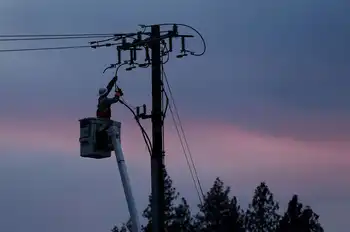
PG&E restoring power after intentional shut-offs affect 20,500 customers
SAN FRANCISCO - Pacific Gas and Electric Co. field crews have begun restoring power to approximately 20,500 customers in Butte and Yuba counties after the utility shut off electricity because of gusty winds and dry weather conditions.
More than half of the affected customers had electricity again as of 1:47 p.m. Sunday, according to PG&E, and by 4 p.m. all of Yuba County power had been restored.
The utility also cut electricity for about 1,600 customers in parts of Napa, Solano and Yolo counties, primarily in the Lake Berryessa area. Power to those areas was switched off at 6:15 a.m. Saturday but was…

